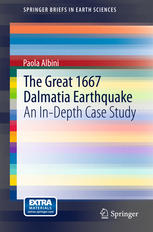

Most ebook files are in PDF format, so you can easily read them using various software such as Foxit Reader or directly on the Google Chrome browser.
Some ebook files are released by publishers in other formats such as .awz, .mobi, .epub, .fb2, etc. You may need to install specific software to read these formats on mobile/PC, such as Calibre.
Please read the tutorial at this link: https://ebookbell.com/faq
We offer FREE conversion to the popular formats you request; however, this may take some time. Therefore, right after payment, please email us, and we will try to provide the service as quickly as possible.
For some exceptional file formats or broken links (if any), please refrain from opening any disputes. Instead, email us first, and we will try to assist within a maximum of 6 hours.
EbookBell Team

4.4
92 reviewsThis book seeks to provide a comprehensive reconstruction of the 1667 Dalmatia earthquake phenomenon on the basis of eyewitness testimony. At the same time, one of the distinctive features of this book is that the earthquake observations are treated and arranged in time and space so as to provide earthquake data on the macroseismic intensity, which might be used in seismic hazard and risk studies.
On April 6, 1667 a devastating earthquake struck the southernmost region of Dalmatia (Croatia). Most of the affected area at that time belonged to the independent Republic of Ragusa, the capital of which was the town of Ragusa, today Dubrovnik. The 1667 earthquake left behind a lasting scar on the history and life of the Republic, as it was the catalyst of a serious financial crisis. Both the economic and more general consequences of this earthquake have been discussed in historiographical and seismological essays in late 20th-century works.
This book seeks to provide a comprehensive reconstruction of the 1667 Dalmatia earthquake phenomenon on the basis of eyewitness testimony. At the same time, one of the distinctive features of this book is that the earthquake observations are treated and arranged in time and space so as to provide earthquake data on the macroseismic intensity, which might be used in seismic hazard and risk studies.
The book is also intended as an extensive case history, which allows the author to include some guidelines on how to approach the study of a past earthquake and proceed to its full seismological interpretation. In this respect, a unique feature of the book is the comprehensive and detailed analysis of the original documentary sources in their proper context, effectively combining the interpretative approaches of history and seismology.